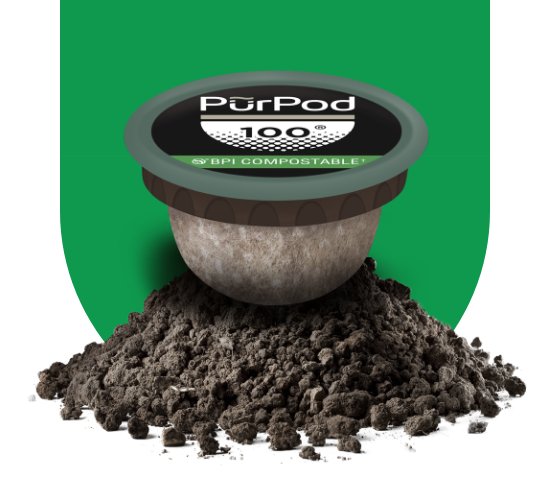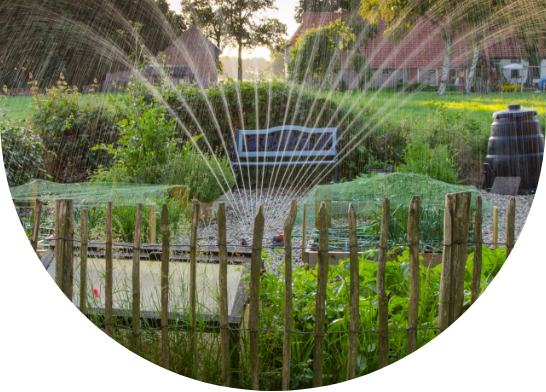Composting 101
Composting, the biological decomposition of food or plant waste, is an environmentally responsible way to dispose of coffee grinds
Composters love coffee grinds as they put valuable nutrients back into the soil via compost.

What is Composting?
At a very high level, we can describe composting as controlled biological decomposition of organic materials. Micro-organisms (primarily aerobic bacteria) consume organic material, utilizing carbon as a source of energy, and nitrogen as a source of protein that allows them to reproduce. By oxidizing organic material, the organic pile will “heat up”, increasing the rate at which organic materials decompose. It should be noted that there are many different types of aerobic bacteria, and certain environmental conditions need to be met to facilitate the composting process (levels of oxygen, temperature, etc.).
Whether it’s your garden compost, or one in a controlled composting facility, the process remains largely the same, with the latter occurring at a much larger scale, and with the ability to better control environmental factors.
It should be noted that macro-organisms (worms, ants, mites, centipedes, etc.) are also involved in physically transforming organic material into compost – breaking material into smaller pieces, making it more digestible for microorganisms.
To find a composter in your area, visit findacomposter.com.
Curbside Composting
Depending on where you live, some households can indirectly compost by participating in curbside composting programs offered in some areas.
In Canada, Green Bin programs offered in some municipalities operate much like recyclable collection, collecting organic waste on a weekly or biweekly basis. That organic waste is then transported to a composting facility to be processed.
In the United States, there are some regional composters offering curbside composting programs.
Wherever you live, even if you live in a city that does not offer a composting program, setting up an at-home composting pile is a fairly straightforward exercise.
Backyard Composting
- Buy a large bin or container, making sure to drill holes at the bottom to allow for drainage. You can also find some bins designed specifically for composting with pre-made holes.
- Place the container on well-drained soil.
- Add a layer of “brown” carbon-based matter – cardboard, dead leaves and branches, paper cartons, etc.
- Follow with a layer of “green” nitrogen-based materials – vegetable and fruit scraps, fresh grass clippings, coffee grounds, etc. Note that it is not advised to put bones, animal waste or treated wood in a backyard compost as the pile temperature is often not hot enough to break down these materials.
- Add water to the mixture until moist.
- Turn the material regularly while consistently adding both “brown” and “green” organic matter.
- Once the compost resembles dark, healthy soil, it is ready to use!
Countertop Appliances
Looking for another way to reduce your food waste and make nutrient-rich compost at home? Countertop compact composting appliances make composting easy and convenient by allowing you to compost food scraps in your kitchen.
In North America, there are several countertop composting appliances available, and many can be found on Amazon.com and Amazon.ca.
No matter which appliance you choose, countertop composting is a great way to reduce your environmental impact and create nutrient-rich compost for your garden.
Why is Composting Important?
Composting plays a pivotal role in encouraging sustainable behavior, helping achieve preferable environmental outcomes by abating carbon, and promoting a circular economy when part of a curbside collection program.
Untreated organic matter decomposing in a landfill is a significant source of greenhouse gases and should be avoided where possible.

What are the Key Benefits of More People Composting?
Composting helps divert organic material from landfills and subsequently reduces the carbon footprint associated with untreated organic waste. Perhaps a more important outcome is that it helps promote sustainable behavior and awareness in consumers that extends beyond “just recycling”. We all want to be good environmental citizens and care about keeping material out of landfills – composting is a relatively convenient way to participate.

Learn more about the world of PURPOD100®
Designed with the environment in mind, PURPOD100® is certified commercially compostable†.
Sustainability
The surprising environmental story of single serve coffee vs. brewed coffee.
Learn MoreDefining Compostability
Why is PURPOD100® commercially compostable† and not biodegradable or recyclable?
Learn More

